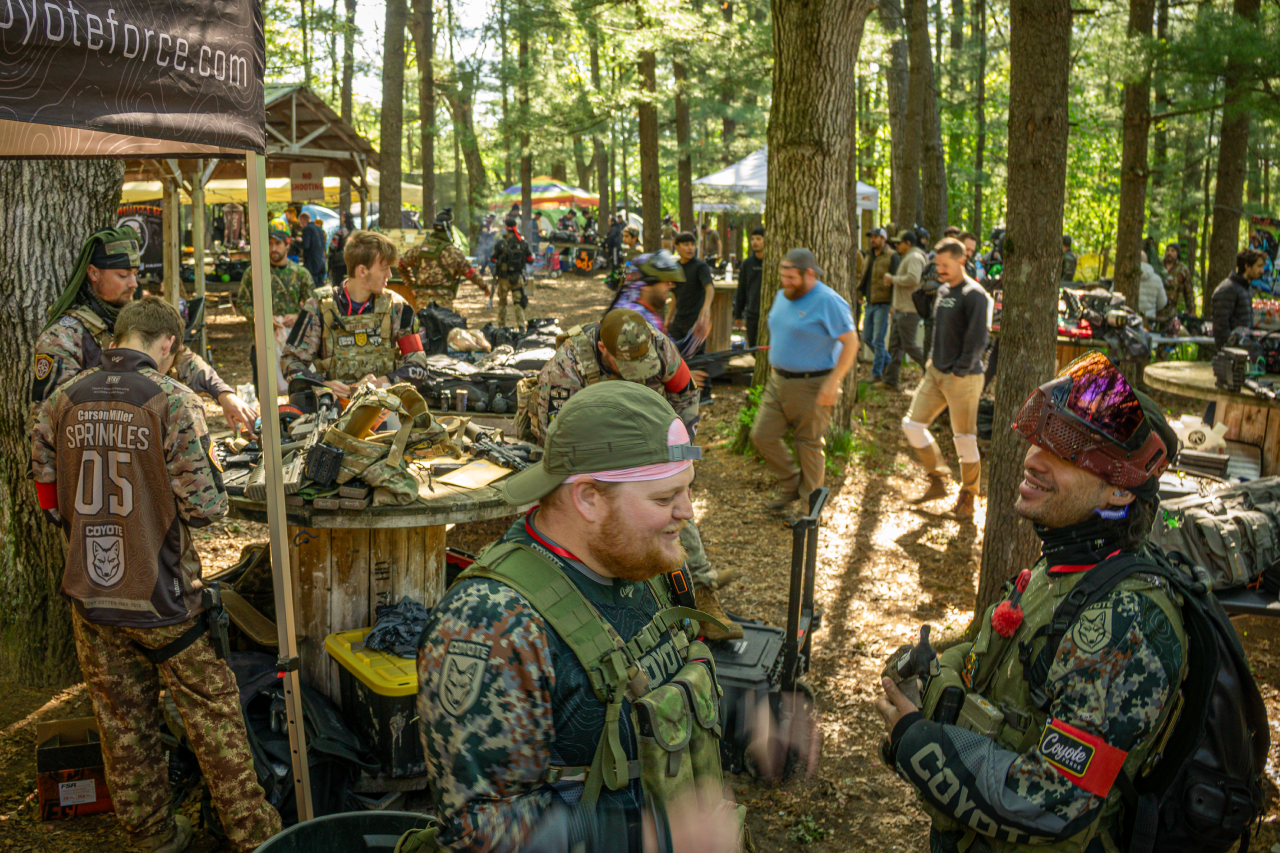

Ask someone what Magfed paintball was like before the pandemic, and you’ll get a dozen different answers, each tinted with nostalgia. Some will talk about the road trips, piling into cars and driving eight or ten hours just to make a weekend game feel like an event. Others will talk about the culture, the chatter before and after, the sense that you weren’t just playing paintball but inhabiting a story.
“I miss the game hype. I miss the pre- and post-game chatter, the story telling and overall immersion in the themes and missions.” -Justin Schaefer
That culture was small, insular, and in many ways fragile. Magfed markers were temperamental things, finicky, prone to breaking paint, and hard to maintain. But that very fragility gave them character, and it gave the players who wielded them a sense of belonging. Christopher Camp remembers meetups where there was always someone on the sidelines trying to coax life back into a marker. The community was as much about the tinkering and storytelling as it was about the actual shooting.
It was, in the words of Justin Schaefer, a culture. “I miss the game hype. I miss the pre- and post-game chatter, the story telling and overall immersion in the themes and missions.” Magfed wasn’t just another day at the field. It was an occasion.
For us, the passion began just before the pandemic. Coyote Force was born out of frustration. We were tired of not having places where Magfed was welcomed, tired of being sidelined in games that didn’t recognize Magfed rules. So we built something ourselves.
We went the distance, literally. “Close” travel meant three to four hours into Chicago for ODIL games. More often it meant Texas, Pennsylvania, New York, or the Carolinas. Sometimes it even meant Germany.
And the distance was part of the point. Those road trips made the community feel alive. Rivalries bloomed along highways and across state lines, and friendships did too. There was tension, competition, a little trash talk, but also mutual respect. Without supporting each other, what do we have? If organizers struggled, we supported them anyway. If their events had values or quirks different from ours, we showed up anyway. Because at the heart of Magfed was always a small community of people who loved the game.
The pandemic didn’t kill Magfed. If anything, it coincided with an explosion. New markers like the EMF100 and the TMC made it easy for newcomers to join. Suddenly there were thousands of players with reliable markers, able to shoot First Strikes, able to hold their own against open-class hoppers.
But something was lost in translation. What had once been “look at us,” a small, dedicated crew of players building something together, became “look at me.” The culture of immersion gave way to individual performance. The family atmosphere, the sense that every meetup mattered, thinned out.
Travel dropped off. Attendance at big games fell by half in some regions. The glue that once held the community together, those few passionate figures who built hype, organized trips, and made events feel special, either moved on or lost momentum.
Ive been in this scene, literally grew up as a kid in it, for a decade+ and the last few years have brought out some of the worst in our community. Rubber rounds, excessice mag dumping, lack of attendance. You would think with all the cool and reliable equipment we would see more attendance but I think its only going backwards. - Ron Sanchez
Meanwhile, costs rose. Paint prices, FSR prices, and admission fees climbed higher. What was once a weekend hobby began to feel like a luxury. As one player put it, “It’s no longer a leisure sport, it’s a pricey hobby.”
Ask around and the answer is simple: culture. The immersion. The hype. The feeling that you were part of something rare, something worth driving across state lines for. That passion, the willingness to skip paying rent just to make a game, has been harder to find.
One of the biggest challenges for Magfed today is cost. Paint, FSR, and admission fees have climbed so high that what was once a weekend pastime can feel like a luxury. If we want to protect the culture, we have to make the game more affordable. That means selling FSR at fair cash prices, allowing players to bring their own paint, and lowering the barrier to practice.
At Coyote Force, we try to meet players halfway. When large Magfed events are being organized, we offer discounts on our monthly practices so the community is not forced to choose between showing up locally or saving money for the big trip. We want practicing, tinkering, and simply enjoying the hobby to remain accessible. The passion that built Magfed came from people who traveled, experimented, and sacrificed to make games special. Keeping the sport affordable is how we keep that passion alive.
Not everyone agrees the past can or should return. Some argue Magfed is exactly what we make of it now. But the consensus among veterans is clear. To rebuild what was lost requires sacrifice, structure, and passion.
And that, really, was the heartbeat of Magfed before the pandemic. Community first, rivalry second. Supporting one another even when our playstyles differed, even when our events did not align perfectly. Because without that support, the game fragments into silos. With it, Magfed becomes more than paintball again.
Schaefer said it best: “Magfed, like all things, is a flat circle. There are a lot of great people out there in the community. Magfed is what we make of it.”
The golden era might be gone, but the lesson it leaves behind is still urgent. When players bring passion, sacrifice, and a sense of story to the field, Magfed becomes culture again. That is why Coyote Force was created, and why we keep going the distance, not just for ourselves, but for the community as a whole.